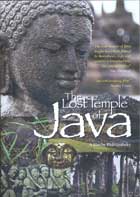
The Lost Temple of Java 2008
Distributed by Microcinema International/Microcinema DVD, 71 Stevenson St. Suite 400, San Francisco, CA 94105; 415-447-9750
Produced by Seventh Art Productions
Directed by Phil Grabsky
DVD, color, 50 min.
Sr. High-General Adult
Architecture, History, Anthropology, Asian Studies
Date Entered: 07/13/2012
Reviewed by Melanie Clark, Texas Tech UniversityThe Lost Temple of Java tells the tale of the discovery of Borobudur, a Buddhist temple once found deep in the jungles of Java. Sir Thomas Stamford Raffles was the British ruler of Java in 1814 when the Javans told him about the existence of this monumental temple. Raffles attempted to make it known to the rest of the world.
The film speculates on what Raffles would’ve thought when he first saw this temple, and follows how he might have tried to investigate its origin. Borobudur was the first evidence found by the Western world of any great ancient civilization in Southeast Asia and, at the time it was built, it was the grandest building in that region of the world. However, there are no writings or inscriptions that shed light on who built it and why. Originally, Raffles thought the building must have been built by Indians. It became apparent though, that nothing like it or the other temples subsequently discovered in Java had been built in India.
Later archeological investigation continued to uncover evidence that Java was once a unified state with artistic sophistication. Borobudur was built in the 9th century, when little in Europe was built to match its skill and artistry. The program also delves into the religious thought that informed Borobudur’s design. Constructed as a pilgrimage site, the 5 kilometer journey around the base of the temple shows sculptural reliefs of the life of Buddha, while the top of the temple is the visual equivalent of enlightenment.
The cinematography in The Lost Temple of Java is exceptional, relaying a strong sense of place. Tracking shots moving down the corridors of the temple give the viewer a sense of what it’s like to move through the structure. The narration and pacing are good while interviews with historians give detail and insight into the history of the temple. The Lost Temple of Java is an excellent look at the background of one of the world’s great architectural wonders.